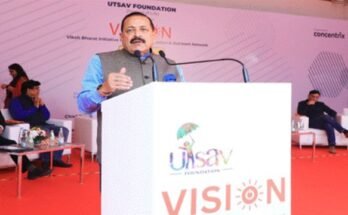Bengaluru : With Infosys buckling under pressure from the Trump administration and having announced on Tuesday that it was in the process of creating 10,000 jobs in the US where locals would be employed, the luster of the once sunrise IT sector has further dimmed. The Trump administration has got what it has demanded from the Indian sector in the US,” says Dr Sujaya Banerjee, CEO, Capstone People Consulting, a firm into organizational transformation.
However, Infosys is going about job creation in a staggered manner. It plans to open four US-based hubs starting in Indianapolis in August and expects that the Indiana site will create 500 jobs by next year, and possibly up to 2,000 by 2021.
Though Infosys has said that it is planning to create 10,000 jobs in the next few years, it is not going to be a possibility, says Kris Laxmikanth, Chairman and Managing Director at The Head Hunters India; and visiting faculty, Institute of Management, Ranchi. He feels that 10,000 is a ‘huge’ figure and worse, there is not enough talent in the US primarily to fill up these tech jobs.
Infosys may hire 100 people from India and then hire the remaining from Indiana, says Laxmikanth, explaining the possibility of the strategy the Indian IT major may adopt to fulfill its promise of creating more jobs in the US for locals.
Getting 100,000 US techies is going to be an uphill task is a fact most experts in the sector agree upon. Besides the salary difference to be paid to the US and Indian IT professionals, the major gap is that there are just not enough tech professionals in the US to fill up these jobs, they say. “Why do US-based firms too hire from India if they could fill up the posts locally,” asks T Santosh, Vice President, and Head – Human Resources, TeamLease Services, a staffing company. The creation of 100,000 jobs to be filled in by US locals would be a stupendous task and not easily possible, he avers.
Infosys, for instance, will not have to pay more for fresh hires as the Indian techies taken on a L-1B visa get paid US $60,000 to $65,000 per annum. The US has a threshold of minimum salary which differs in each state. New hires may have to be paid marginally higher at US $80,000-$82,000 when the new visa regulations kick in.
Skill level of the passing out youth is continuously deteriorating. This is an oft-cited complaint against colleges in India, says Dr Banerjee. She suggests that IT firms like Infosys and others can take engineering and technological education as part of their corporate social responsibility program. “If you want tech graduates to be industry-ready, work with the engineering colleges in India and provide them the tech expertise,” she says. A public-private partnership would work well for the colleges and the tech firms too. “It will stop the blame game and help Skill India program,” Banerjee added.
Note: News shared for public awareness with reference from the information provided at online news portals.



